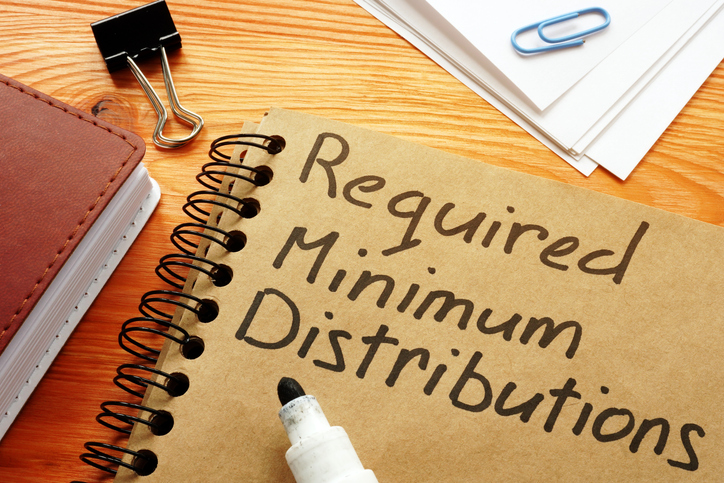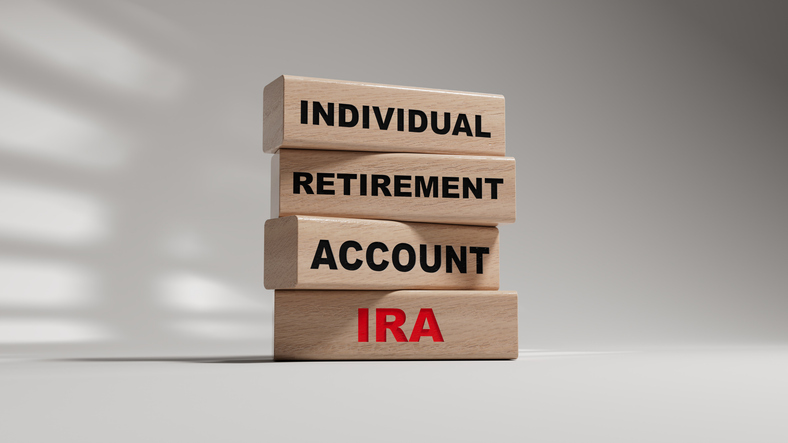If you’re 63 years old with $1 million in a traditional IRA, you may be wondering whether converting $100,000 per year to a Roth IRA makes sense. Doing so could help you avoid required minimum distributions (RMDs) later on. This strategy may reduce your future tax burden and give you more control over your retirement withdrawals. It also comes with immediate tax implications and other considerations that could impact your long-term finances. Here’s how to think through the trade-offs so you can decide whether this move fits your retirement plan.
What RMDs Are and Why They Matter
For many retirees, RMDs can increase taxable income in retirement, possibly pushing them into a higher tax bracket. RMD income may also raise Medicare premiums and even increase the portion of Social Security benefits that are taxable.
How Roth Conversions Work
A Roth conversion involves moving money from a pre-tax retirement account like a traditional IRA into a Roth IRA. When you do this, the amount you convert is added to your taxable income for that year, and you pay ordinary income tax on it. Converting a large IRA often results in a sizable current tax bill.
The trade-off is that Roth IRAs have no RMDs during the original account holder’s lifetime. Any qualified withdrawals in retirement are tax-free, and the account can continue to grow tax-free for as long as you hold it.
How $1 Million in an IRA Could Play Out With vs. Without Conversions

How you handle a $1 million IRA in the years before required minimum distributions begin can have a major impact on your retirement taxes, income flexibility and estate planning outcomes.
For example, if you were to convert $100,000 from a traditional IRA to a Roth IRA at age 63, the IRS adds the entire amount to your taxable income for that year.
Let’s say you converted $100,000 in 2024. After applying the standard deduction for someone under age 65, your taxable income would be about $85,400 (assuming you’re filing single). Here’s the calculation:
Conversion of $100,000 Traditional IRA to Roth IRA in 2024
- The standard deduction for single filers under age 65 in 2024 is $14,600.
- Converting $100,000 would result in a taxable income of approximately $85,400 ($100,000 − $14,600).
To estimate the federal tax on that amount using 2024 tax brackets:
- 10% on the first $11,600: $1,160
- 12% on income between $11,600 and $47,150: $4,272
- 22% on income between $47,150 and $85,400: $8,324
That would generate an estimated federal tax bill of roughly $13,756 on the conversion. This tax would be due for the year of the conversion, and the amount could be higher if you have additional income.
By comparison, if you had $1 million in a traditional IRA at age 73, your first required minimum distribution (RMD) would be calculated using the IRS Uniform Lifetime Table. At that age, the factor is 26.5, which means your first RMD would be approximately $37,736. Here’s the calculation:
RMD Calculation at Age 73 for $1 Million IRA
- The Uniform Lifetime Table factor for age 73 is 26.5.
- Therefore, the first RMD on a $1 million balance would be approximately $37,736 ($1,000,000 ÷ 26.5).
Taxes on RMD Using Standard Deduction for Age 65+
- The standard deduction for single filers in 2024 is $14,600, with an additional deduction of $1,950 for those aged 65 or older.
- That brings the total deduction to $16,550. Subtracting from $37,736 gives a taxable income of about $21,186.
- 10% on the first $11,600: $1,160
- 12% on the remaining $9,586 (over $11,600): $1,150
Total estimated tax: $2,310
This example assumes age 73, single filing status and no other income beyond the RMD. It also does not account for growth in the IRA between now and age 73. A larger IRA balance would mean a larger RMD and tax bill.
What It Means for You
In the examples above, the Roth conversion results in a much larger tax bill in the year of conversion compared with simply taking an RMD later on, $13,756 versus $2,310. This is balanced by the fact that, once those funds are in a Roth IRA, they can grow tax-free and also be withdrawn tax-free.
Because there are no RMDs, you don’t have to withdraw the money at any set time, or at all. This can provide greater flexibility in retirement, help manage future taxable income and reduce taxes your heirs might pay.
By contrast, keeping the full balance in a traditional IRA means smaller tax bills in the short term but ongoing taxable withdrawals every year once RMDs begin. Over time, those annual taxes can add up, especially if your IRA continues to grow or if RMDs push you into a higher tax bracket.
Whether a conversion is the right move depends on your current tax bracket, your expected future income, and your long-term retirement goals. For some retirees, paying more in taxes upfront is worth the future flexibility and potential savings. For others, the immediate cost outweighs the benefit.
A financial advisor can help you run the numbers, weigh the pros and cons, and design a strategy that fits your personal situation.
Other Factors to Consider
Beyond the immediate tax implications, several broader considerations can influence whether a Roth conversion makes sense for you. The following are some things you may want to consider:
- Current vs. future tax rates: Most people are in lower tax brackets after retirement. However, if you expect your rates to rise, paying taxes now could be advantageous.
- Impact on Medicare and Social Security: Higher income during conversion years could temporarily increase Medicare costs or the taxation of Social Security.
Lifestyle and spending needs: Consider whether paying the extra taxes now will affect your retirement budget or lifestyle plans. - Longevity risk: If you live a long life, avoiding RMDs and maintaining tax-free growth in a Roth could pay off substantially.
The Case for Converting $100,000 Per Year
Converting $100,000 per year from a traditional IRA to a Roth IRA, rather than making a single large conversion, allows you to spread the tax burden over several years. This gradual approach smooths taxable income, reduces the risk of a large tax bill in any single year and may keep you from moving into a higher bracket. It can also be an effective way to manage your tax liability if you have other sources of income in retirement.
For many retirees, the strategy offers meaningful long-term tax savings. This may be the case if you anticipate being in the same or higher tax bracket in later years, perhaps due to RMDs, pension income or other investment earnings. If you anticipate that scenario, paying taxes at today’s rates could prove less expensive.
A gradual Roth conversion can also offer valuable estate planning advantages. With no RMDs during the account holder’s lifetime, Roth account balances can grow tax-free for longer.
And, when passed on to heirs, a Roth IRA can be inherited tax-free, although beneficiaries must still follow applicable distribution rules. This can make the value of the inheritance more predictable and often greater after taxes compared to leaving a large pre-tax IRA.
Potential Drawbacks of Roth Conversions
While converting to a Roth IRA can offer long-term benefits, it also comes with some immediate challenges. Converting $100,000 from a traditional IRA in a single year will increase your taxable income, which could push you into a higher tax bracket and affect your eligibility for certain deductions or credits.
In some cases, the added income may also trigger income-related monthly adjustment amount (IRMAA) surcharges for Medicare Part B and Part D premiums. Because these surcharges are based on your modified adjusted gross income from two years prior, the impact might not show up right away. But when it does, it can be significant.
There’s also the risk of market timing. If you convert when the market is near a peak, you’ll pay taxes on the full value of your assets. Should the market drop soon afterward, you may end up paying taxes on gains that have disappeared.
Finally, how you pay the taxes on a conversion matters. The most efficient approach is to use funds outside your IRA to cover the tax bill, allowing the full converted amount to remain invested for future growth.
If you use IRA funds to pay taxes, that withdrawal will be taxable and, if you’re under age 59½, may also incur penalties. Even if penalties don’t apply, tapping into your IRA to cover taxes reduces the amount of money working for you in retirement.
Bottom Line

Converting $100,000 annually from a $1 million IRA to a Roth could help you avoid RMDs, reduce your long-term tax burden and provide more flexibility in retirement. But it comes with immediate tax consequences and potential Medicare impacts. Before committing, it’s wise to run detailed tax projections and explore how different conversion amounts might affect your overall plan. A financial advisor can help you build a customized Roth conversion strategy that balances today’s tax costs with tomorrow’s benefits.
Retirement Planning Tips
- A financial advisor can help you create a retirement plan to grow and manage your nest egg. Finding a financial advisor doesn’t have to be hard. SmartAsset’s free tool matches you with vetted financial advisors who serve your area, and you can have a free introductory call with your advisor matches to decide which one you feel is right for you. If you’re ready to find an advisor who can help you achieve your financial goals, get started now.
- SmartAsset’s tax return calculator has updated brackets and rates to help you estimate your next refund or balance.
Photo credit: ©iStock.com/fengdr, ©iStock.com/designer491, ©iStock.com/PeopleImages
Read the full article here
















